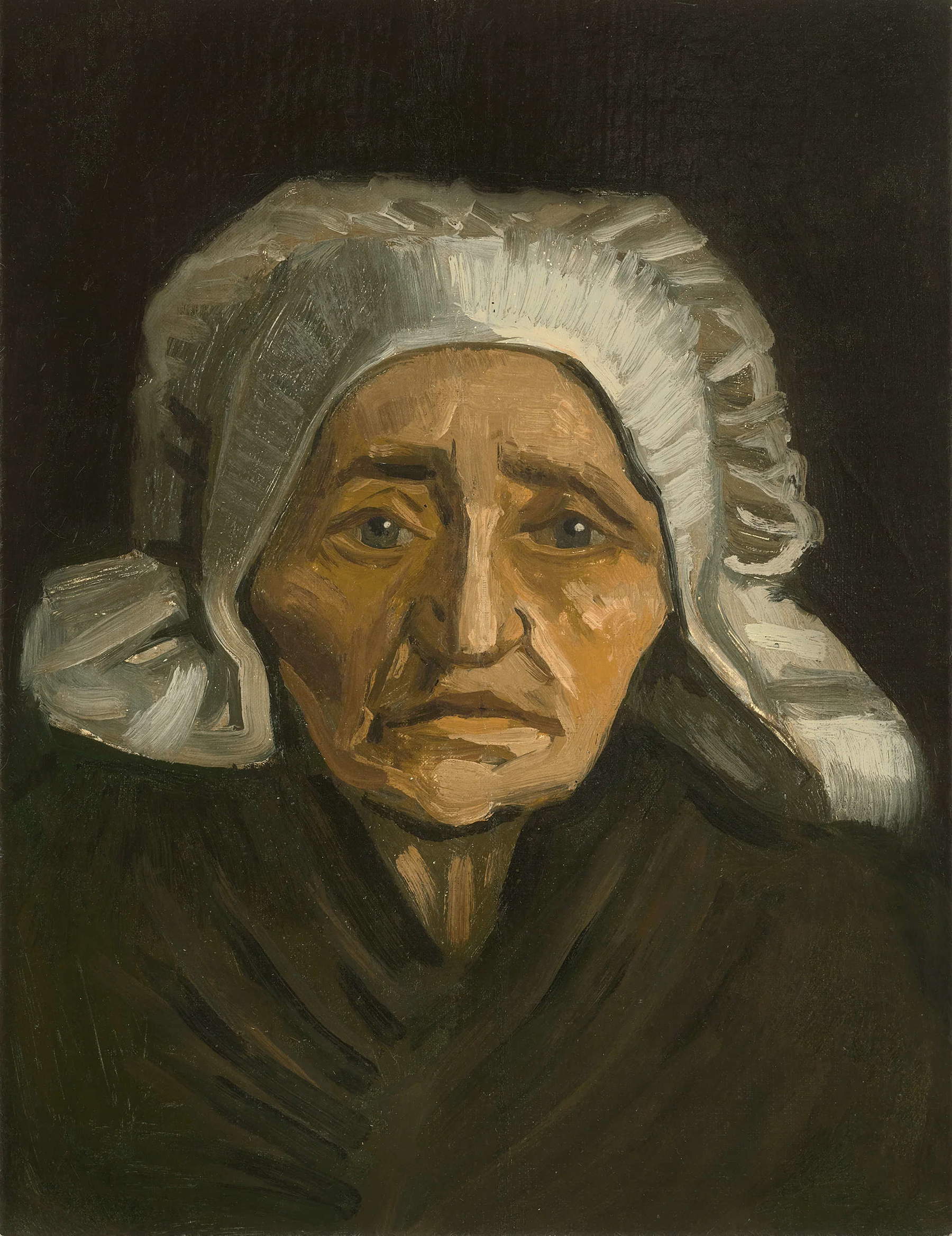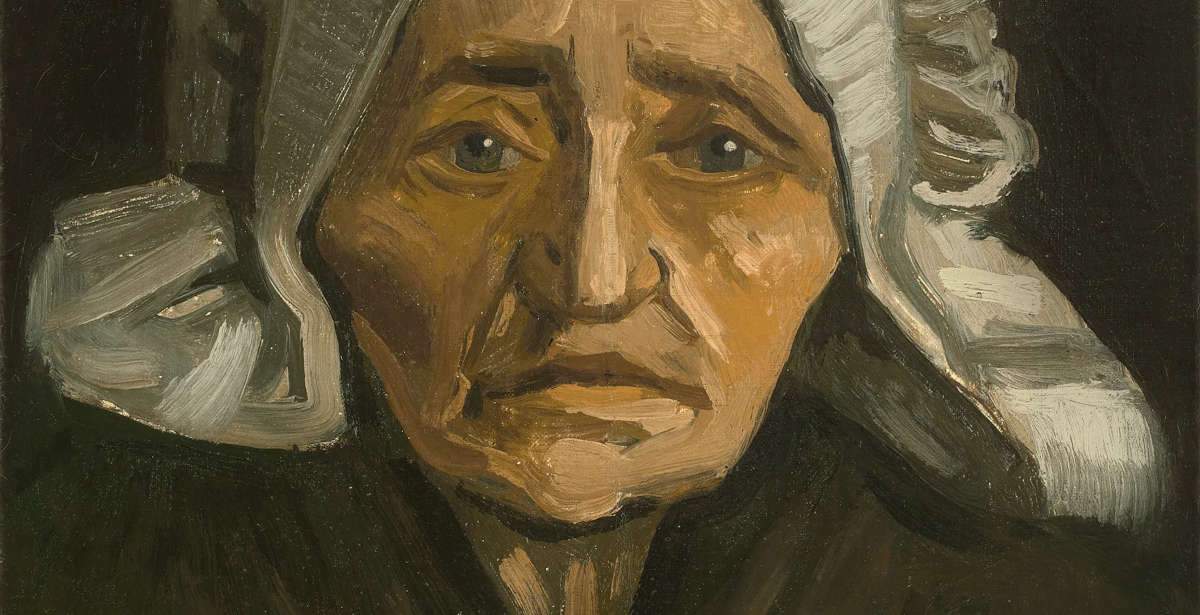Among the major sales at the 2024 edition of TEFAF, number 36 of the major international antiques fair, is one of the most illustrious pieces in the entire exhibition: a painting by Vincent van Gogh (Zundert, 1853 - Auvers-sur-Oise, 1890), the Tête de paysanne à la coiffe blanche (“Head of a Peasant Woman with a White Bonnet”), brought from the MS Rau Gallery in New Orleans, United States. It is an important work from 1884, whose authenticity has been confirmed by the Van Gogh Museum in Amsterdam, according to the gallery.
It is thus one of the paintings referable to the Nuenen period: a work, therefore, that is particularly rare on the market and also highly sought after. The painting was for sale at a price of 4.5 million euros and was sold on Sunday to a museum outside the European Union. A private museum, as far as is known. For now, not much more is known about the buyer, nor about the amount at which the transaction was concluded, since it has not been revealed. All that is known is that the work, according to the Dutch agency ANP, will be accessible to the public in its new home. This is good news, since the work had not been exhibited since even 1903.
The work, as mentioned, dates from the Nuenen period: in 1883, the artist, while in the Dutch town, where he had moved, leaving The Hague, to reside in the family home, delved into the genre of portraiture by devoting many portraits to local peasants, with a particular approach, that is, trying to paint them with a strong sense of empathy, the reason why these villagers appear to us invested with such a vivid aura of dignity, and so expressive. Tête de paysanne à la coiffe blanche also immortalizes a local woman from Nuenen, with particular emotional involvement on the part of the artist.

“What excites me most, much, much more than others in my work - is the portrait, the modern portrait..., ” Van Gogh wrote to his brother Theo. “I would like to make portraits that, a century later, can seem to people of the time like apparitions. Accordingly, I do not try to do this through photographic likeness, but through our passionate expressions.” His time in Nuenen is widely recognized as a pivotal period in his artistic development, culminating in his famous masterpiece, The Potato Eaters, completed in 1885 (the year Van Gogh would leave Nuenen to move first to Antwerp and then to Paris). Tête de paysanne à la coiffe blanche is a particularly interesting example of works from Neunen’s period, in which the artist showcases his ability to capture both the appearance and character of his models.

With thick, deliberate brushstrokes, van Gogh paints his peasant woman as she looks forward. The color palette evokes a dimly lit evening setting, accentuating the dramatic illumination of the woman’s face. The model in the present work is depicted insistently close to the pictorial plane, with little background so as not to distract the viewer. Writing to Theo on March 2, 1885, Vincent says, “At present I paint not only as long as there is light, but also in the evening by lamplight, if I can somehow distinguish things on my palette, to capture, if possible, something of the singular effects of night lighting.” This focus on light is further accentuated by the effect of traditional headgear. Van Gogh saw in this elaborate white headdress an opportunity to emphasize the contrast between the dark, indeterminate backgrounds and the dramatic features of the face. As Evert van Uitert noted, “Van Gogh was trying to capture the distinctive feature of his peasant figures, and he considered it more important that a head be expressive rather than absolutely correct.” The white headdress contrasts greatly with the dark, dramatic features of the peasant woman’s face, emphasizing the large, expressive eyes. This bold chiaroscuro effect conveys a sense of drama, evoking a deeper emotional connection with the viewer. An important work, then, reflecting Van Gogh’s deep and persistent desire for evolution.
It is a work well known to critics, since it appears in several monographs devoted to the Dutch artist. The painting has been around a lot: first recorded in the Mouwen collection in Breda, Holland, it then passed to the Oldenzeel gallery in Rotterdam, which sold it to the Dutch collector Van Ogtrop-van Kempen. It then went through two other private collections before being sold at auction in 1981 by Sotheby’s in London: purchased at the Piccadilly Gallery in London, it passed to the Landau Fine Art gallery and from there to a private U.S. collection in 1998. Again sold at auction, again at Sotheby’s but this time in New York, where it was sold for 1.2 million euros to a private collector, and from them it then came to the MS Rau Gallery. The rest is history of these hours.
 |
| Important Van Gogh painting sold at TEFAF: non-European museum buys it |
Warning: the translation into English of the original Italian article was created using automatic tools. We undertake to review all articles, but we do not guarantee the total absence of inaccuracies in the translation due to the program. You can find the original by clicking on the ITA button. If you find any mistake,please contact us.